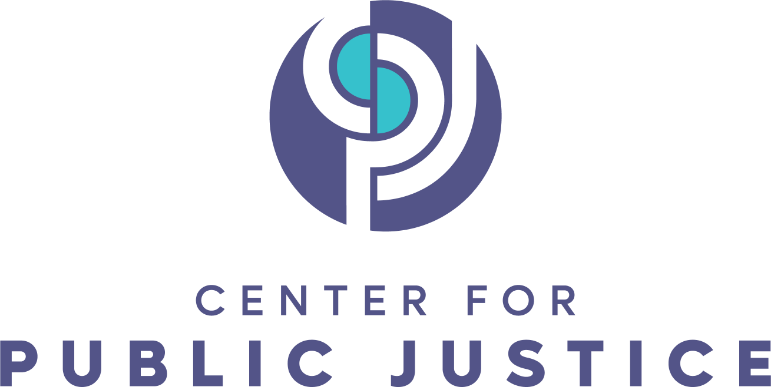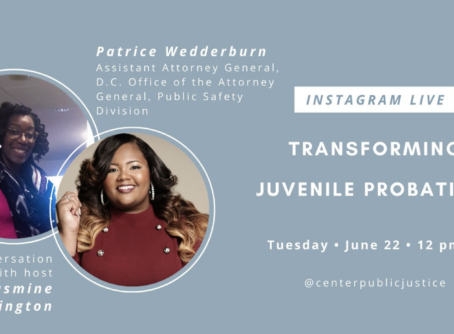
Just as individuals responsible for our food systems, energy systems, and health care play a crucial role in saving lives and sustaining our society, those who care for those who work in essential roles and their families are essential themselves. Child care provided by extended family or by dedicated caregivers has always played a crucial role in our communities. The importance of this has never been as salient as it is now. World leaders have called for a “war effort” response to COVID-19. This blog post explores that analogy in light of the dire need essential workers have for child care, including family-based, home-based, and center-based care. Readers will learn about the current status of child care for essential workers, supports needed to protect children and providers, and current proposals to meet these needs.
WHERE ARE THE CHILDREN?
Sixteen million Americans fought in World War II, and as men were conscripted to tend to the frontlines, those remaining were called upon to tend to the homefront. In addition to the low-income women and women of color who were already part of the U.S. workforce, eight million additional women—previously dedicating time to rear their children—were welcomed, many of them taking factory jobs. Their factories converted to produce military equipment, and by the end of the war American industry had generated two-thirds of the Allied military equipment with the help of American caregivers.
The wartime effort called upon every American to do their part: In addition to military and labor involvement, Americans were called upon to conserve energy, plant victory gardens, and buy war bonds. It was the responsibility of every individual to do their part in pursuit of victory over the enemy.
“This is the time for the war effort,” stated U.S. National Economic Council Director Larry Kudlow on April 6, 2020, “In this case, the pandemic effort. In this case, the effort to keep families and individuals afloat.”
Every American is once again called upon to do their part in this current “war effort”: stay six feet apart, wash hands frequently, and wear homemade masks to prevent infecting others. American industry is also beginning to respond with commitments to produce health care equipment. As many of us adjust to this disruption and adhere out of love for our neighbors, health care providers, paramedics, and other essential workers tend to the frontlines. These workers put themselves at risk to care for the sick and maintain our communities.
In a wartime effort—as first responders mobilize, industries respond, and non-essential workers are asked to do their part by staying home—who cares for the children of the first responders?
CHILD CARE IS ESSENTIAL
Our country currently needs people to staff the warfront of the COVID-19 pandemic, just as men and women were called upon to fight with the Allies. Like our current workforce, many of the crucial factory workers were also caregivers. Their labor contributing to the production of military equipment was essential, but their need for child care while at work was a barrier to their participation.
In late 1942, an amendment to the Lanham Act of 1940 established emergency nursery schools in communities contributing to the production of military equipment. The Lanham Act awarded grants to communities that demonstrated a need for child care due to the war effort. Communities were able to use the federal money to build and operate child care centers, train and pay workers, and purchase supplies.
The Lanham grants were not perfect—parents were still left with limited options, and in today’s context the grants may have left out the diverse faith-based child care and home-based care providers that enrich our communities—but they remain groundbreaking. The federal grants facilitated an increase in paid work among mothers and allowed for a program with “strong and persistent positive effects on well-being” for the children who attended. As we consider our current “war effort” and the needs of our first responders and other workers who need to work, we know child care is crucial to their ability to do their important jobs.
In a wartime effort—as first responders mobilize, industries respond, and non-essential workers are asked to do their part by staying home—who cares for the children of the first responders?
ON THE FRONTLINE
Child care providers in their many forms—essential services to essential workers—are currently struggling to remain afloat in their communities. “This has been one of the toughest times I have experienced in my 14 years of owning and operating an early-learning center,” writes Tracy Jost of Dunkirk, Maryland. Jost, like many providers, has seen her enrollment drastically decline in the last few weeks. “At night, I lay awake with anxiety trying to decide if we were doing the right thing,” writes Jost. “How do you balance serving children and fear for the children or staff being exposed to the virus and keeping our business afloat if we decide to close?”
Providers are struggling to protect the health of their workers and children. Some providers are closing to protect the health of their staff. MaryLou Beaver in New Hampshire made the “difficult, difficult decision” to close her center in order to protect her staff, most of whom are over the age of 60. However, some providers are closing because they lack access to important supplies that protect both staff and children. Miren Algorri in California, for example, wants to serve parents who need to work for as long as she can, but “we are running very low on cleaning, disinfectant, and sanitizing supplies. When I don’t have those supplies, then I will have to stop providing services.”
In one of the handful of states yet to impose a stay-at-home order, Amy* of Iowa, a home-based child care provider, mourns the loss of her families: “Not only do you miss these kids like crazy, but it’s financially scary,” she shared with Families Valued on April 8th. Her business is typically at or near full capacity, serving 12-14 children full-time. Now, she’s down to serving half that number of children, only serving those parents with jobs considered essential and parents with children too young to have at home while they work remotely. Some of her parents help the kids Facetime with Amy. “They cry and cry and ask ‘When can I come back?’ and it’s just so hard. . . These kids are not mine biologically, but for so long everyday they are mine. It’s a special bond.”
To keep the children remaining in her care as safe as possible, Amy and her husband monitor the news. “It’s been really confusing. Our governor will get on T.V. and say, ‘No more than ten people in a group,’ and I call my DHS case worker and they said ‘Actually, in a state of emergency, you can take on more children than usual—up to 16 full-time.’” Amy says she and her husband also are careful to watch for guidance from DHS. “If they don’t tell me to close, then I won’t. Not only is this our families’ livelihood, but I couldn’t do that to these parents who have to work.”
EMPOWERING CHILD CARE PROVIDERS TO SERVE
Without federal guidance, state responses have widely varied to the complex challenge of helping providers serve essential workers, while navigating economic uncertainty and public health concerns. Rhode Island temporarily closed all of its child care centers and is now working with online child care hub Care.com to coordinate services to the families of frontline workers. Michigan has begun relaxing protective regulations to allow child care providers to take on more children, and allow previously unlicensed providers to provide care. The District of Columbia has announced plans to open emergency child care centers for children of health care workers, strategically located near hospitals. Colorado, the state with the most innovative response thus far, launched the Emergency Child Care Collaborative—a group of child care providers, advocacy groups, school districts, foundations, and the Colorado Department of Human Services—which commits to providing 100% tuition credits to workers considered essential personnel in responding to the public health emergency. The Collaborative also commits to trying to help essential personnel find an emergency placement for their child.
The Center for Public Justice’s distinct perspective — what we call “public justice” — recognizes that a healthy society consists of diverse institutions, each with valuable roles. Families, congregations and religious life, schools, businesses and industries, the arts, and other institutions each make unique contributions to human flourishing. Government’s valuable role is helping these diverse institutions work well together, and ensuring they can and do fulfill their unique responsibilities. For example, government cannot and should not replicate the work of families. But, government should foster conditions in which families can fulfill their calling, including the calling of enabling parents to do life-saving work outside of the home.
In a time of crisis—or, at the moment, twin crises—government can play an important role in organizing institutions so that they can more effectively collaborate. As American industry responds to the material needs of health care workers, and schools respond to the needs of students learning remotely, child care providers are aware of the important role they can play in caring for the children of those on the battlefield. But to do this well, in a way that honors the health and dignity of workers and families, child care providers need support.
As states and the federal government look to continue to respond, there are three key principles for policymakers and public servants to keep at the forefront:
1. Safeguarding the health of both providers and children is paramount.
To stay open for essential workers, child care providers need health guidance for how to keep their workers and children safe, as well as the means to implement the guidance.
One important safeguard for child care providers is access to sick leave, which allows workers to stay home when ill without forgoing pay. The Families First Coronavirus Response Act established emergency sick and family leave that can apply to child care workers. The law funds the leave through a tax credit. Like many small businesses, however, providers will need prompt access to these funds in order to both provide the leave and stay afloat.
A second way to protect the health of both providers and children is helping providers implement the workplace cleaning procedures recommended by the Centers for Disease Control and Prevention and Occupational Safety and Health Administration. In addition to general workplace guidance in light of COVID-19, the CDC provides supplemental guidance for child care programs that may help protect both provider and child from spreading the virus. As helpful as this guidance is, the ability to implement cleaning procedures is currently hindered for some providers by a lack of physical and financial access to necessary sanitation supplies.
2. To serve, child care providers need financial security.
Child care providers have been consistently under-compensated and financially stressed, even when the U.S. economy was healthy. In 2018, child care workers earned a median wage of $11.17 per hour. Child care workers employed by religious organizations to provide care made even less hourly. Unsurprisingly, providers work with limited financial buffers. A recent survey of 6,000 child care providers found that 30 percent of providers have to permanently close their doors in the event of a closure of two weeks. Without support, providers will be unable to continue serving essential workers
Supplemental public funds should empower providers to provide quality, safe child care for workers who need it. The recently passed Coronavirus Aid, Relief, and Economic Security (CARES) Act did allot some discretionary funding for the Child Care and Development Block Grant (CCDBG) program. The 3.5 billion will be dispersed by grants to the states to help child care providers survive decreased enrollment and maintain services for essential workers. The CARES Act also establishes a range of paycheck protection options for small businesses, for which some providers may be eligible. However, child care advocates anticipate the sector needing more, with funding requests between 50 billion and 100 billion in order to help providers implement workplace safety and cleaning procedures and to provide child care workers who continue to serve essential workers hazard pay.
3. Funding should sustain a diversity of child care options.
The investment from the CARES Act is an important first step, but appropriate implementation is vital. The expanded funding should support the wide range of providers, including faith-based providers who only receive funding from the CCDBG through certificates (vouchers) in order to retain the freedom to operate consistently with their religious beliefs and practices. States need to design ways to deliver increased support without entangling certificate-system providers in the secularizing rules that can accompany grants and contracts. Future funding should explore ways to encourage and expand child care vouchers or certificates for essential workers, so that as we benefit from their paid work, we honor their parenting and their convictions.
“THIS IS THE TIME”
Similar to the U.S. response to WWII, every American is called upon once again to do their part in the fight against COVID-19. The workers who maintain our food systems, energy systems, and health care are playing a crucial role in upholding our community. While their work is essential for our well-being, the work of child care providers is essential to them. Child care workers are needed at this moment to provide care for the children of essential workers. Additionally, we will also need them at the end of this pandemic when it is safe for workplaces to open and parents are able to reenter the workforce. For child care providers to do their part in fighting COVID-19, we must empower them to continue to serve.
Otherwise, if we don’t empower child care providers to serve essential workers, who will care for their children?
Chelsea Maxwell is the Program Associate for Families Valued, a Center for Public Justice initiative promoting policies that support and honor God’s call to both work and family life.
*Amy’s name was changed to respect her privacy.




